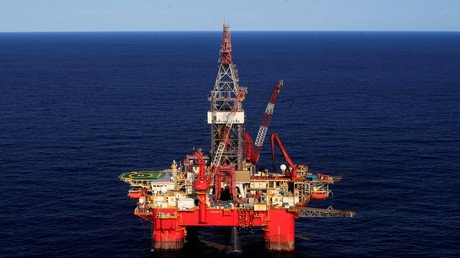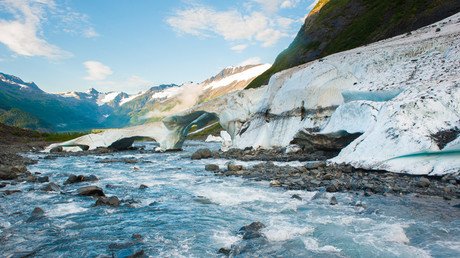US plan would open oceans to offshore drilling for 'energy dominance'
Bucking a three-decades-old prohibition, the Trump administration announced it plans to expand offshore drilling leases in 90 percent of US oceans. The move is stirring strong public opposition.
“We’re embarking on a new path for energy dominance in America, particularly on offshore,” Interior Secretary Ryan Zinke said Thursday as he unveiled the plan, according to the New York Times. “This is a clear difference between energy weakness and energy dominance. We are going to become the strongest energy superpower.”
The Trump Administration is proposing auctioning off nearly all US coastal waters for offshore drilling https://t.co/6BLDt7CE2tpic.twitter.com/jQFMcb2xSs
— Business Insider (@businessinsider) January 4, 2018
Zinke’s plan is considered the most ambitious offshore drilling proposal in decades, and is a consequence of President Donald Trump’s executive order in April encouraging more drilling rights in federal waters.
Under the 2019-2024 leasing program, 90 percent of the total US Outer Continental Shelf (OCS) would be made available and more than 98 percent of federal offshore areas would be available for oil and gas development. Currently, 94 percent of the OCS is considered off-limits.
Under the draft proposal, which will be available for public input, the US government is looking to lease 47 parcels, 19 off the coast of Alaska, 12 in the Gulf of Mexico, nine in the Atlantic and seven in the Pacific Region.
With my crude photoshopping, this is Trump's offshore drilling proposal. Green is open, red is closed, dark green is closed 2019-2022, open 2023-2024 pic.twitter.com/nhE84fNioo
— Timothy Cama (@Timothy_Cama) January 4, 2018
In Alaska, the plan would open up areas in the Beaufort Sea, Cook Inlet, Gulf of Alaska, and Kodiak, among others. No sales are proposed in the North Aleutian Basin Planning Area.
In the Pacific, leases are proposed in Northern California, Central and Southern California and Washington/Oregon.
The proposal would lift a ban on drilling imposed by President Barack Obama in his final days in office, protecting more than 100 million offshore acres along the Arctic and Eastern Seaboard. Leases would be offered in the Mid- and South Atlantic, North and the Straits of Florida. There have been no sales since 1983 and there are no existing leases in these areas.
Oil industry leaders praised the proposal, calling it long overdue.
“I think the default should be that all of our offshore areas should be available,” said Thomas Pyle, president of the American Energy Alliance, according to the New York Times. He said seismic testing would be needed to assess potential oil and gas reserves in the Atlantic Ocean, though it could take years before potential testing permits are issued.
“These are our lands,” Pyle said. “They’re taxpayer-owned and they should be made available.”
The expansion is likely to trigger huge political backlash, particularly on the West Coast and in Florida. Offshore drilling has generated sharp opposition from residents, environmental groups and businesses who fear a spills – such as BP’s in the Gulf of Mexico in 2010 – could devastate beaches and destroy the tourist industry that is vital to the regional economies.
BREAKING NEWS: The United States will finally be unleashing our full potential, cutting our dependency on foreign oil and kicking the economy into overdrive! https://t.co/WB66AqlHto
— Patriots For America (@PFAUSA1) January 4, 2018
Frank Knapp, president of the Business Alliance for Protecting the Coast, told the Times that hundreds of small East Coast businesses, from restaurants to hotels to commercial fishing operations, have mobilized against allowing drilling off their state waters.
“It’s not consistent with our vibrant tourism, fishing and recreation. That’s what the East Coast is,” Knapp said. “Their concern is their livelihood, the local economies. We all saw what happened to the Gulf Coast with Deepwater Horizon.”
Finalizing the plan may take as long as 18 months, with public meetings slated to begin around the country on January 16. Venues and times will be posted on the Bureau of Ocean Energy Management’s website.















